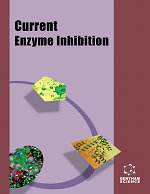
Full text loading...
We use cookies to track usage and preferences.I Understand
The aim is to systematize data from literature sources on the study of changes in the activity of HMGR enzymes and lipid metabolism under the influence of cyclic lactones, identify among them new potential inhibitors of HMGR and formulate hypotheses about the details of the mechanism of action of the enzyme in relation to the product - mevalonolactone.

Article metrics loading...

Full text loading...
References


